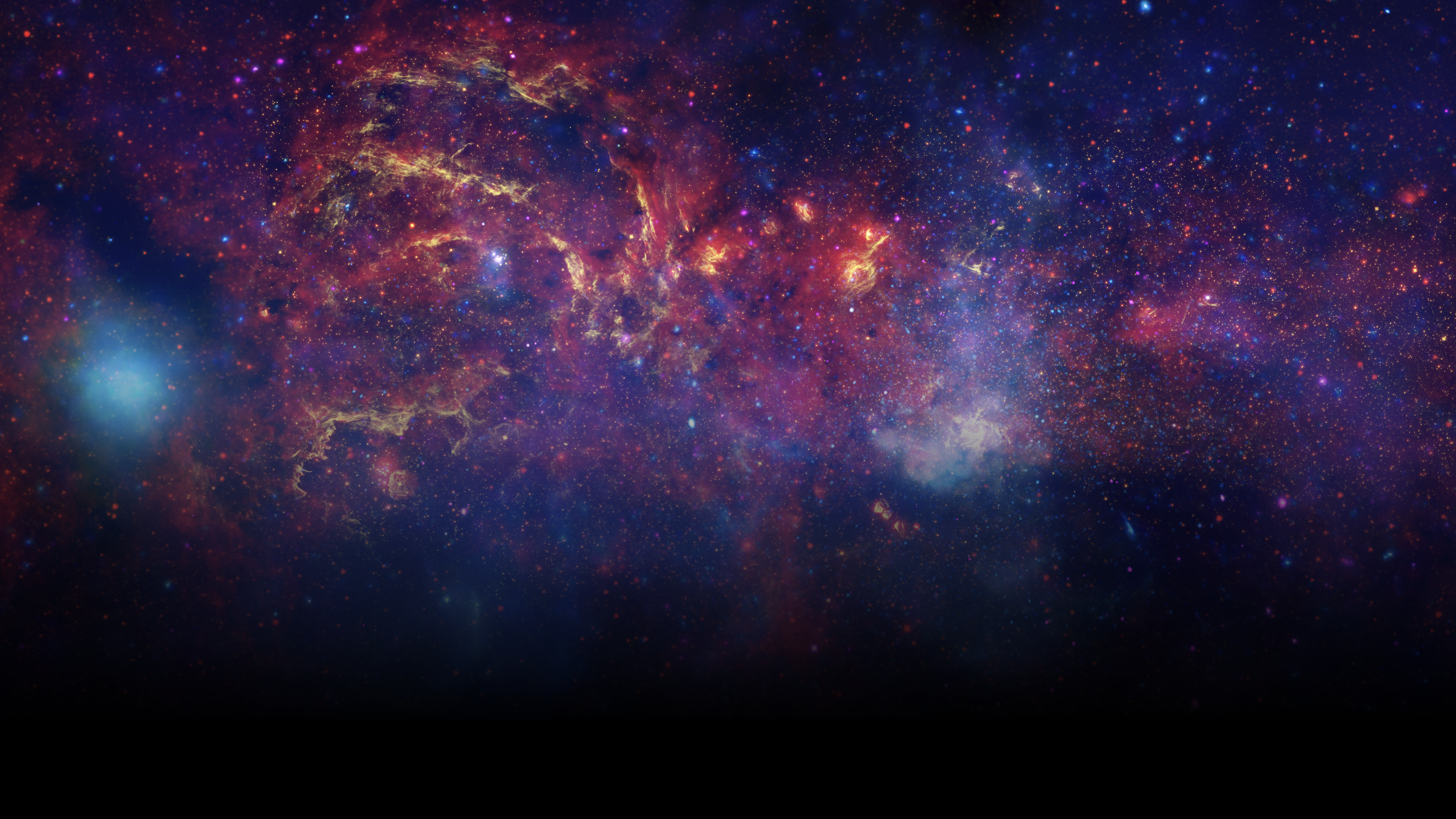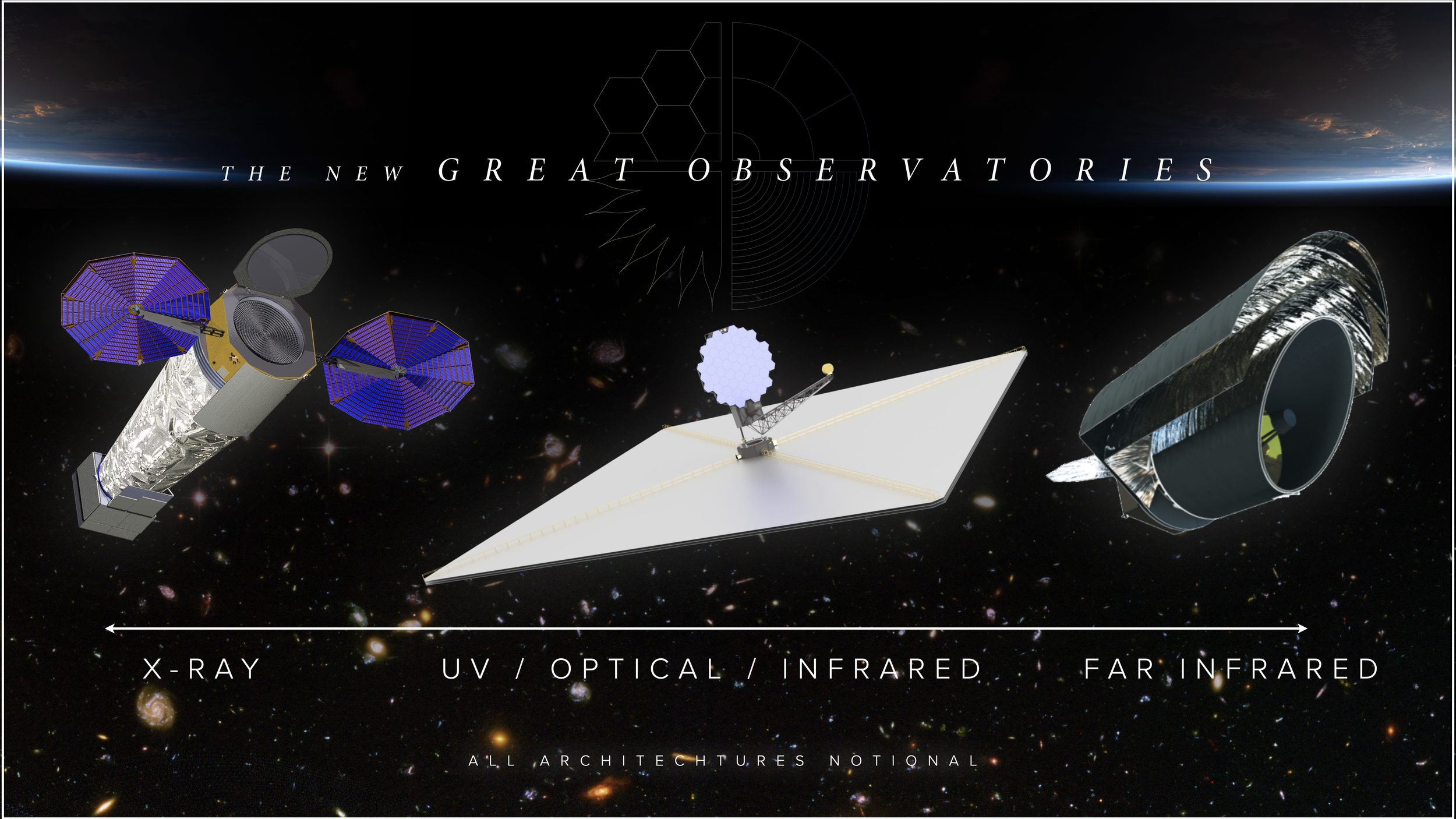
Doomed matter spiraling around event horizons. Sunrises on distant alien worlds. A cosmic symphony of sound waves rippling through the largest known structures in the Universe. These are real scientific results from the Great Observatories, four transformatively powerful telescopes that NASA, alongside international partners like ESA and the Canadian Space Agency, launched between 1990 and 2003. The Hubble, Compton, Chandra, and Spitzer Space Telescopes are now known, uncontroversially and worldwide, as some of the greatest endeavours in scientific history. Now, the term “Great Observatory” has transcended these missions alone. It now reflects a vision for transformationally powerful, flexible, and long-lived facilities enabling panchromatic synergy, near-simultaneity, and acting as force multipliers for ground-based facilities around the world. With extended missions that can span decades, Great Observatories become something other than a pursuit of important but narrowly-defined science goals. They become discovery platforms for the questions we have not yet thought to ask.
The NASA Great Observatories Science Analysis group has written a scientific retrospective on the golden age of cosmic discovery powered by the first Great Observatories. This report was heavily cited by Astro2020 in their motivation to pursue a new program of Great Observatories. Read the report below:
Note the symmetry of Astro2020’s recommended entrants to the maturation program with the First Great Observatories. This isn’t an accident; it’s a testament to the combined power of UV/O/IR, (Mid/Far-Infrared), and X-ray observatories in space. NASA is now considering a science analysis group to help synthesize a future science case for the New Great Observatories. Stay up-to-date as that SAG forms here.





